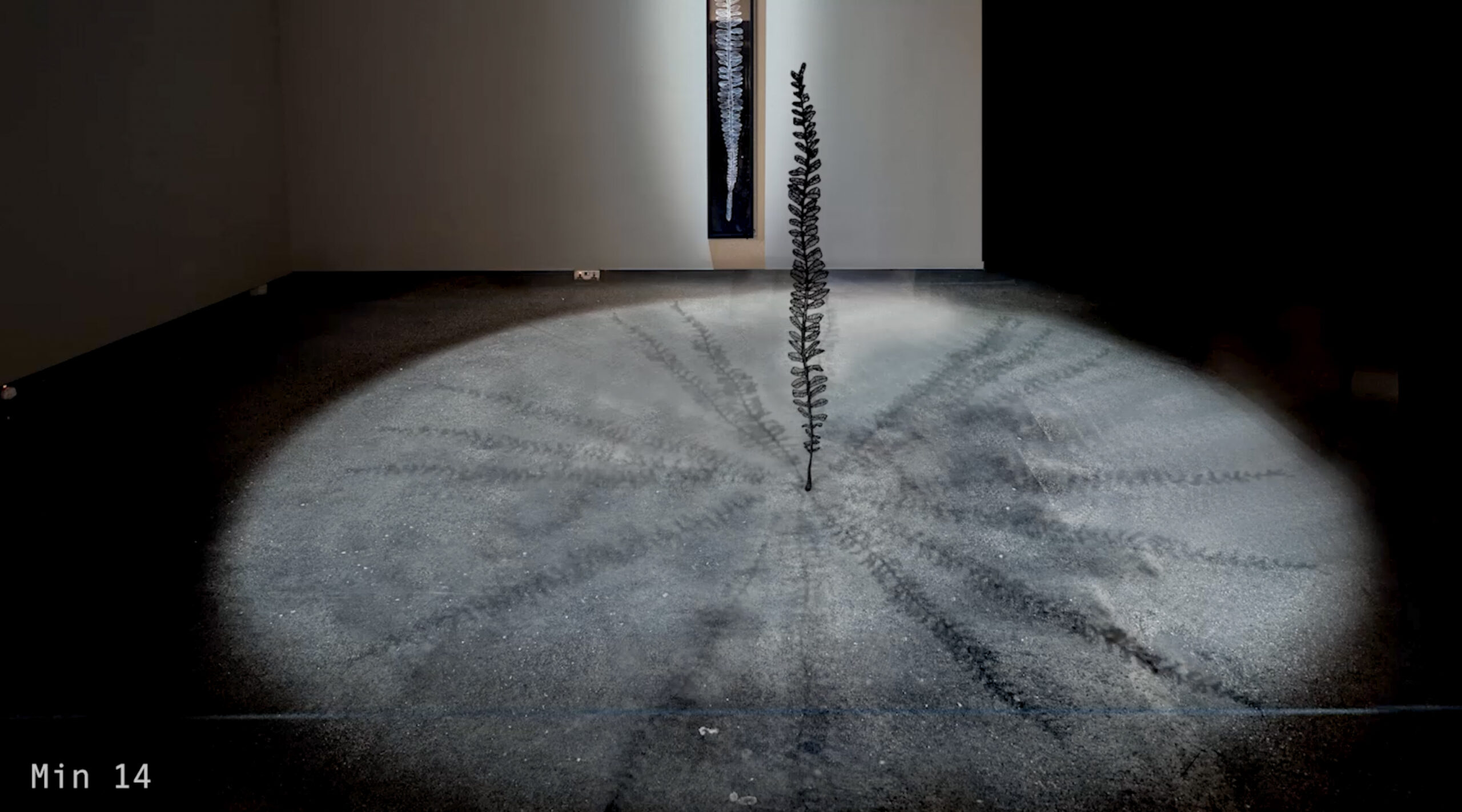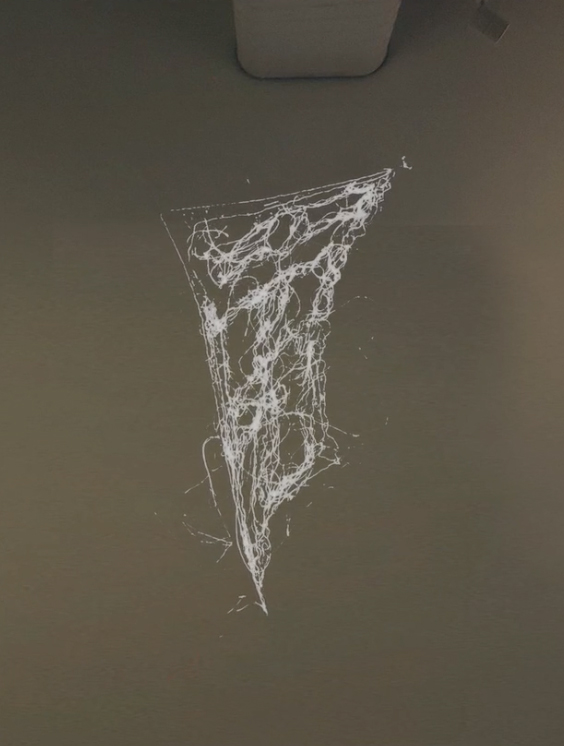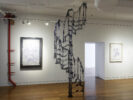Aicon Contemporary, New York
& 1X1 Art Gallery, Dubai
Images from two shows
On Time and its Witness
Animation of projected shadows
Ferns made of Thread and Wire
Duration: 16.08
As Structure Dissolves
Stop Motion Animation, projected on wall.
Duration: 9.22
“As Structure Dissolves”, shown as part of “Given Time: The Gift and its Offerings” curated by Arshiya Lokhandwala at Aicon Contemporary, New York.
This feels like such an unusual and incredible moment in human history. We are still on the unstable cusp of a shifting world-rhythm. Our old structures -social, political, patriarchal, environmental, medical, and economic- seem to be unravelling and this gift of time we have suddenly been given, offers a shapeshifting of our stories, identities, and ideologies.
As I contemplate the idea of the ‘gift’, ‘given time’, ‘unraveling structures and stories’ in my personal life, our family home –33 Link Road -in Delhi comes to mind. This home was built, post the partition of India, by my refugee grandparents and has been the site of innumerable family gatherings, shared stories, weddings, new births, and shared grief in deaths. The idea of ‘home ‘ has continually been tethered to this “permanent” address, which offered the gift of stability, as I shifted cities, countries and houses – but always returning, to the familiar surfaces of this home, with its whispered promise of constancy. For the first time in 70 years this home now lies empty, its last occupant (my grandmother) recently deceased.
The thread drawings and animation are of the architectural fragments from 33 Link Road, converting its solid, protective, sheltering surfaces into soft, spectral cob-webs of past memories; flattened as if preserved within the pages of a book . The familiar becomes itinerant, wandering, shape shifting as the hard architecture starts unravelling, hovering weightlessly, like an insubstantial mirage. In the stop-motion animation, a beloved door from 33 Link Road is constructed stitch by embroidered stitch. Ultimately the form mutates, fragments and dissolves back into its original material (thread), swirling like a galactic phenomenon, offering back into the universe its temporal gift of form, to be assimilated into the material of stars. As the thread resists the change in form, tugging at its identity as a door, I start to consider that- this pull and push, this fracturing of, reassembling or leaving open our stories and who we thought we were, stretch the spectrum of identity, exposing unconsidered possibilities for who we can be.
* * *
“On Time and its Witness”, shown as part of “Phantasmagoria: Specters of Disenchantment” curated by Arshiya Lokhandwala at 1 X 1 Art Gallery, Dubai.
On Time and its Witness looks at our relationship to time and to nature. The installation is a dialogue between two skeletal plant forms, one black and one white; both ethereal and rendered fragile by time. The wall-mounted, white fern stands specter-like as the unmoving witness to the drama of its counterpart – the black fern, which is placed in the center of time’s swirling shadows.
One by one, shadows emerge from the base of the black fern, lengthening and rotating to mark different rhythms of time. The first movement of shadow is a slow, continuous, smoothly skewing path, spiraling into and growing out of the center -reminiscent of shadows created by the sun on a sun dial. This elemental rhythm is then joined by a second movement in time – an unvarying shadow that slowly, consistently sweeps the circle of light around the black fern, marking each degree systematically. As time progresses, more shadows appear and the marking of time gets more structured, staccato and mechanical, like the hands of a clock. Each shadow moves faster than the one before, overlapping and overtaking each other, moving in and out of sync with each other’s rhythms, creating momentary patterns of both – harmony and dissonant asymmetry. As the pace increases, the shadows start to spiral frantically like the blades of a fan building up to a frenzied pitch, which finally causes these shadow rhythms to blur and melt into each other, leaving behind the original rhythm of the first movement.
The sudden pause caused by the pandemic, in the fevered activity of the Anthropocene, has been an invitation for many of us to re-look at our relationship to time and to re-discover our natural rhythms. The shifting world tempo throws up many questions into the air. Will we re-imagine our stories or configure them back into the same pattern again? Will there be a shapeshifting of our ideologies, our relationship to time, to nature and to the environment? Will the old shadows linger on?
Threadwork
2023:
Exhibit 320, Delhi, India
CSMVS museum, Mumbai, India
KNMA (Kiran Nadar Museum of Art), Noida, India
2022:
Asia Pacific Triennial QAGOMA
2021:
Aicon Contemporary, New York & 1X1 Art Gallery, Dubai
2020:
Kiran Nadar Museum of Art, Delhi
2019:
Sakshi Gallery, Mumbai, India
Hermès, The Chanakya, New Delhi
2019-current:
Architectural Thread Drawings
2018:
Wilfrid Israel Museum, Israel
Belgrade Biennale/ 58th October Salon, Serbia
2017:
Dr. Bhau Daji Lad Mumbai City Museum
India Art Fair/ FOCUS
C24 Gallery, New York, USA
2016:
Exhibit 320, New Delhi, India
Saatchi Gallery, London, UK & Art Houz, Chennai, India
2015:
SPACE, Wood Street Galleries, Pittsburgh, USA
2015-current:
Botanical Thread Drawings & Vitrines








